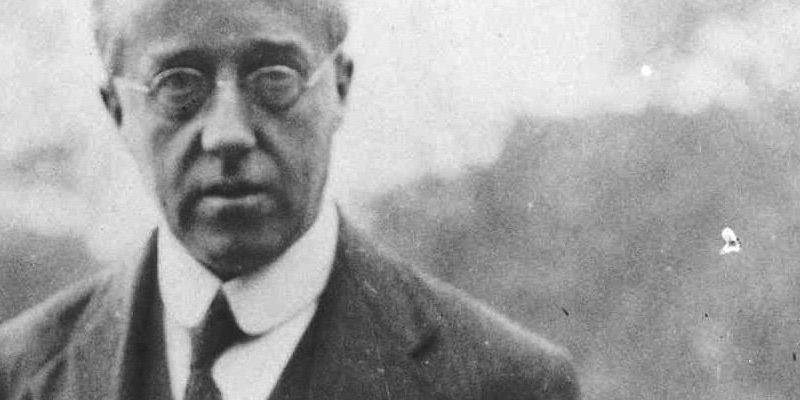For a million years or more, singers and instrumentalists playing on natural instruments made music freely with the sole goal of expressing their feelings. But once notation appeared the “rules” of music began to be addressed to the eye rather than the ear. The creation of bar lines in the eleventh century created units of time itself which lent to the eye the apparent rule that music must be contained within these units and the freedom of the ancient musicians was now lost for good. The subsequent history of notation was a constant effort to allow an escape from these preset units of time, including such things as colored notation and Proportional notation. By the time of the Baroque composers such as Praetorius and Frescobaldi began to write “just ignore the notation; play faster or slower as you desire.” And by the eighteenth century it is amazing to see the lengths composers such as Haydn went to to write music that fell between those bar lines, but sounded as if it were in an entirely different meter or tempo. By the advent of music schools in the nineteenth century a new rigidity became the rule and as a result today no student believes he is entitled to expand a measure of music in performance solely on the basis of his feelings.
All notation is essentially an anti-musical construction and we must believe that all musicians have always rebelled against restriction to limit their expression. Thus we find even before the modern notational system, during the period of neume notation, the monk, Notker of St. Gall (840–912), discusses in one of his letters the use of the letter “t” in plainsong notation to mean “trahere vel tenere debere,” suggesting the stretching of the music to express the feeling of the words. We cannot call this the first use of tenuto because in his discussion it is evident someone else was already doing this.
The fermata symbol, which appears as early as the fifteenth century in the music of Dufay, is another vestige of the fight against legislated time in music. Most of us, when young musicians, were told that the familiar fermata “bird’s eye” symbol meant only a “stopping place.” And so it does today for ordinary citizens living in Milan, for the symbol appears on all bus stop signs. But this symbol can mean many other things in music notation. Mozart used it, for example, over the final double bar of a composition to make sure the copyist understood this was really the end of the composition. He also used it to signify both cadenzas and eingänge points, the difference being a matter of harmony. Bach, in his chorales, used it to designate where the singers breathe.
An alternative definition of fermata is to pause, but not stop. An example is found near the end of the final Rondo in Mozart’s Gran Partita, K. 361. The music, to the confusion of many conductors, just seems to hesitate, without a break in the progression of the music. In my experience, such a use of the fermata symbol associated with a pause seems to have an emotional connection, which is certainly relevant to my understanding in the Mozart example.
This use of the fermata symbol to create pause for an emotional reason is perfectly illustrated in the beginning of the Sixth Symphony of Beethoven. Here I must pause to remind those friends who have shared with me the mild winters of California and Texas that all of Europe is further North than our State of Maine. Having lived for three years in Vienna and Salzburg, I can understand the great experience of that day which arrives suddenly announcing Spring. The return of Spring was the most familiar subject, after love, of the Troubadours in their numerous original songs. And it was from this background of the joy of the sudden return of Spring, the return of color and the return of birds that Beethoven, in the very beginning of the symphony, runs from his house and in the fourth bar immediately stops, in awe of the beauty of Nature, takes a deep breath of the fresh new air and then continues on his way. That is what the fermata here is all about, a pause, not a stop, to express feeling. The note he wrote here, “Awakening of cheerful feelings upon arrival in the countryside” clearly includes his emotion, as did his often quoted description of the entire symphony, “more an expression of feeling than painting.”
As in the practice of the fermata, the current literal meaning of tenuto in Italian speech and in music has to do with holding on to something. I have begun to think that in the early nineteenth century the implied elongation by the word tenuto was tied to feeling and was not yet thought of as an articulation. In such a use it would be very similar to the Beethoven Sixth Symphony example mentioned above. I have been working on a modern edition of a Requiem for chorus and band which was commissioned, in a highly charged emotional atmosphere, for the reburial of Louis XVI on 21 January 1815 in Paris. In the first movement, a Marche funèbre, the internal cadences of the melody are marked tenu. There is no logic here for an accent, but when I sing this and elongate the measure one immediately feels a much stronger emotional expression. [1]On the very same day a similar ceremony in honor of Louis XVI, minus the body, was held in Vienna in St. Stefan’s Cathedral with a Requiem composed by Sigismund Neukomm and conducted by Salieri. … Continue reading
This association of elongation for the communication of feeling seems to me exactly what is implied in Beethoven’s little masterpiece, his Andante for wind instruments. Here again, in the internal cadences, he writes “Ten” and by elongating this note, and the notes leading into it, the result is a much more expressive feeling. It is particularly enlightening that at the end of this composition when two unaccompanied horns are representing the court persons riding off into the distance, Beethoven still writes “ten” even though he also writes “senza tempo.” That is, the feeling he associated with the cadence and its elongation is maintained even though it no longer has any association with tempo. As a natural result of this association between elongation and feeling, Beethoven concludes with an augmentation of his initial melodic material, a very touching and poignant ending.
After Beethoven, one finds in the highly idiosyncratic music of Chopin uses of tenuto which are very puzzling and gives one the feeling that it would be only in hearing Chopin himself play that we would understand what he meant. What, for example, was he thinking in his Scherzo, Op. 39, Nr. 3, when he wrote three bars of tied G Sharp with “ten.” over the beginning of the first bar? Under the second bar is a diminuendo sign and a piano symbol under the third, appearing to represent the natural decay of a long sound struck one on the piano. But what did he expect tenuto would add to this? Similarily, in his Barcarolle, Op. 60, in bar 39 one finds tenuto over the beginning of a tone lasting 7 beats, also with a dimenuendo beneath leading to sotto voce. Again, what could tenuto add to this?
In his Polonaise, Op. 26, Nr. 1, in bars 8 and 20 there is tenuto written over a bar which looks as it were part of a cadence which might sound expressive as a ritenuto, but since in both cases he writes “ritenuto” two bars later we have to assume that he would have used this word if that is what he meant. So, what did tenuto mean here? Especially interesting here is the use of tenuto (“to hold” in Italian) and two bars later ritenuto (“reserved, self-possessed, retained, kept-back” in Italian).
In the Nocturne, Op. 27, Nr. 1, at the Piu mosso, in the meter of 3/4 we find four bars of a melodic figure consisting of a dotted quarter-note followed by an eighth-note and a quarter-note, with tenuto written over each of the dotted quarter-notes. Five bars later this figure appears as double dotted, now a double dotted quarter-note followed by a sixteenth-note, etc., but no tenuto marking. So does tenuto here mean a holding back of the dotted quarter-note to become something longer, but not as long as being double dotted?
It is in this same Nocturne, beginning in the third bar, that we see, I believe for the first time in Chopin, the more familiar notation of quarter-notes which have both dots over the note heads and a slur over groups of such notes. This is the appearance which most musicians today would probably call tenuto.
Beginning by about the middle of the nineteenth century pianists become the first to speak of the tenuto symbol as meaning an accent. J. Frank Leve, a publisher of materials for the piano during the early years of the twentieth century, writing in the Etude Magazine, Vol. 32, page 567, writes,
I have adopted the sign (-) as a pressure sign because in classical works where this sign is used it is best produced by the pressure touch, notwithstanding in musical dictionaries it is defined as tenuto, sustained. My claim is that the sign (-) does not mean tenuto in the same sense as when the musical term is used. It rather means, in addition to the note being held for the full time, that it is produced by a pressure on the key.
He then quotes the famous pianist, Josef Hofman (1876–1957), as adding,
It means that the notes should be played in such a way as to stand somewhat isolated from each other and held down, but not long enough to form a legato. It also implies a certain emphasis.
The use of the word emphasis here by Hofman, documents the arrival of the impression that some have today that the tenuto is in fact a kind of accent. We can see this again in a comment on the tenuto by Arnold Dolmetsch (1858–1940).
Tenuto can mean either hold the note in question its full length (or longer, with slight rubato) or else play the note slightly louder. In other words, the tenuto mark is sometimes interpreted as an articulation mark and sometimes as a dynamic mark.
This brings us to an observation by Siglind Bruhn (b. 1951) in Germany, who, in her Guidelines to Piano Interpretation, calls the tenuto “the most abrupt of all agogic processes.” Going further, she writes, “a tenuto applied wisely comes unexpectedly and causes surprise.”
That is a long way from the emotionally expressive use by Beethoven.
Notes
References
| ↑1 | On the very same day a similar ceremony in honor of Louis XVI, minus the body, was held in Vienna in St. Stefan’s Cathedral with a Requiem composed by Sigismund Neukomm and conducted by Salieri. In Paris, while the public was in favor of beheading Louis XVI during the French Revolution, after the interval 25 years and after Napoleon’s loss of an entire generation of young Frenchmen (including 2,000 French musicians lost on the march to Moscow), the public now regretted having beheaded Louis XVI. Thus the very strong public emotion surrounding this ceremony in 1815 during which the remains of Louis and his wife, Marie Antoinette, were more properly laid to rest in an imposing structure. |
|---|


